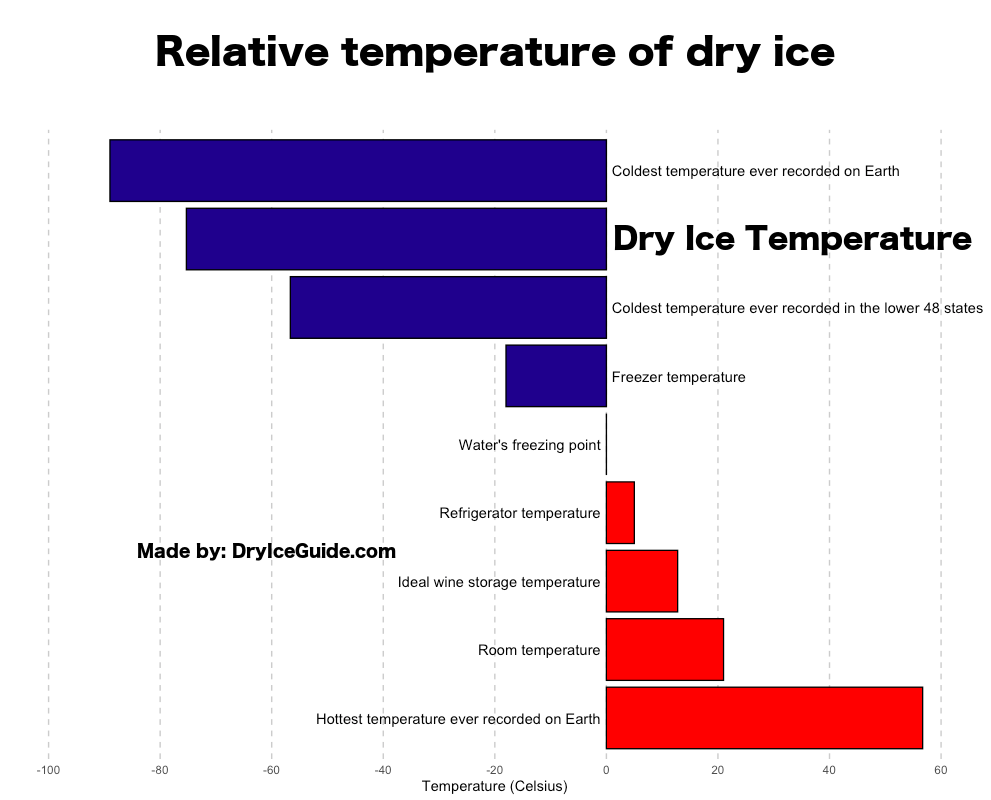Answer: -109.8 °F (-78.5 °C)
Dry ice is cold, incredibly cold. It has a surface temperature of -109.8 degrees Fahrenheit or -78.5 degrees Celsius (197.85 Kelvins).
These numbers can be difficult to fully comprehend, so we made two charts comparing some widely known temperatures to dry ice. First in Fahrenheit:

And then in degrees Celsius:

And below is the table containing the actual figures:
| Coldest temperature ever recorded on Earth (on Antarctica) | -128.6 °F | -89.2 °C |
| Dry ice temperature | -109.8 °F | -78.5 °C |
| Coldest temperature ever recorded in the lower 48 states (in Montana) | -70 °F | -56.6 °C |
| Ideal freezer temperature | 0 °F | -18 °C |
| Water’s freezing point | 32 °F | 0 °C |
| Ideal refrigerator temperature | 40 °F | 4 °C |
| Ideal wine storage temperature | 55 °F | 13 °C |
| Room temperature | 70 °F | 21 °C |
| Hottest temperature ever recorded on Earth (in Death Valley, California) | 134.1 °F | 56.7 °C |
How does dry ice compare to temperature records?
Of course, -109.8 Fahrenheit is the sublimation temperature of dry ice on the surface of it where it meets with air. Inside it can be even colder. Due to these temperatures, its handling requires extreme care.
As we can see, the surface temp of dry ice is much colder than the lowest temperature any average person would experience in their lifetime. The coldest temperature ever recorded in the contiguous US is actually 40 degrees warmer than it. Quite a difference if you ask us. But it is also worth noting that the lowest temperature ever reliably recorded on Earth (at the Soviet Vostok Station on Antarctica) is nearly 20 °F below what solid CO2 is.
Although dry ice is absolutely freezing by everyday standards, it is still closer to the boiling (!) point of water than it is to absolute zero (the lowest limit of the temperature scale at 0 Kelvin or -459.67 Fahrenheit / -273.15 Celsius ).
Another cold substance commonly used by scientists and frequently starring in viral videos is Liquid Nitrogen. Both dry ice and LN2 are notoriously frosty, but there is a big difference between them still. The liquid form of Nitrogen is actually a lot colder with it being -320 Fahrenheit (-196 °C) at normal athmospheric pressures.
So yes, please do not attempt to touch dry ice with bare hands anytime! It is incredibly important to wear protective clothing (gloves) to decrease the risk of frostbite.